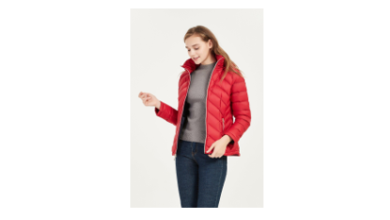How to start your own fashion clothing brand

Every famous brand has a story. The origin story of many clothing brands that now dominate department stores is not a simple one. It was started as a small business from the home of a budding fashion designer. Although it might seem difficult to start your own clothing brand, eCommerce and internet marketing can help you transform an online shop into a well-respected clothing brand.
You will need a unique name to start your clothing brand. Name your brand using your name or another closely related name. If you are starting a business together with shareholders or partners they may have the right of vetoing certain names. There is nothing you can do. Avoid using generic terms like “Style,” “Trends,” or “Fashion.”
These are some of the steps you should follow before you start a clothing company.
Select the unique brand name that best represents your speciality
It is important to consider the meanings of your clothing brand’s names. Clothing can be used to express the values of your company or increase interest in large retailers that may want to stock your brand’s clothing.
When creating the brand identity for your brand, it is important to consider the type and design of clothing. You must first decide whether you will sell formal or casual clothing. Do you plan to sell beach clothes or formal clothing? What kind of beach clothes will you be selling? Are they beach clothes for women or men? Consider using multiple patterns. Combining textures, such as fur and leather, or patterns like stripes and polka dots can be used.
Once you have established the basics, you can now move on to the next stage of your clothing brand: creating a product line. How well you market your products will determine the popularity of your brand. It is important to do research in the fashion industry to find out if there are any other brands that fit your niche.
Next, you can create a sample for the industry. You can get an idea of how different materials and designs look on different people by having a sample of your designs printed on fabrics that are similar in texture and color. A test run is also possible.
Invest some Revenue in Branding and Brand Logo Design
You might consider advertising your brand if you or your co-founders have large amounts of money. If you don’t want to have an online store but still want to sell your clothes in brick-and-mortar stores, you can consult a real estate expert about the best location for your clothing brand.
Once you have created the outline of your business plan, it is time to register your company name. The next step is to create your logo and design the look of the website. You should make sure that your brand values are represented.
Target Audience:
It’s not enough to create a garment that is needed; you also need to identify the market that will be interested in that product. Great design doesn’t mean much if there aren’t potential clients. Consider the benefits and drawbacks of targeting certain populations.
For example, young people are more fashion-conscious and more open to word-of mouth and web marketing, but may have less financial resources. While they might be more willing to pay a higher price, customers in their 40s and 50s may not be as interested in style or be committed to a brand.
Search for the right wholesaler to get your desired outfit product:
For decades, clothing production has been located outside the United States. It is very likely that you will find a manufacturer in China, Vietnam or Sri Lanka. While you might want to visit the manufacturer in person if possible, budget-conscious novice designers will need to complete their screening process over the phone or by email.
If your fashion goals are more modest, you might be able produce your items locally at a print-on-demand plant. You can also find Wholesale dresses at some online wholesalers like Amazon, Alibaba, Aliexpress, and global lover. There are many clothing options for children, women, and babies.
Scale up your clothing business:
You are the one responsible for launching the clothing brand. You’re now able to iron out wrinkles and your clothing line is up-and-running. Scaling is a possibility for you if you are a forward-thinking entrepreneur who has plans to produce new products or increase your orders.
Take some time to evaluate how your company is doing before you make any commitments to major actions. It’s best to be modest during the first few seasons. Learn the realities of production before you move on to the next challenge. While your company strategy may reflect the development timeline, be flexible.
You could start by recruiting your first employee to help you with the above. This will give you some breathing space to evaluate your clothing business.
Conclusion
Launching a clothing brand is not easy, but it’s rewarding. Success in any sector is measured by more than the product or service that they offer. Successful entrepreneurs know this. They get to know their competitors and target market, develop a strategy to achieve their goals, work hard to promote their products and take lessons from their failures.





